It’s been interesting to chart the course of The Division and Destiny as they’re both games I’ve played a lot of and each of them have had their own challenges over the years. Destiny started out strong and built on that, managing to bring me back into the fold with nearly every expansion that they released. The Division on the other hand couldn’t bring me back until Patch 1.8 when I came back into a game that had grown substantially. From there Destiny began to waver until it found its feet again in Forsaken (although I’m yet to go back after Black Armory). So I had some trepidation stepping into The Division 2, fearful that Massive might pull a Bungie and uproot all the good work they had done with the original. I’m glad to say that this isn’t the case, there are changes to be sure, but all of it seems in aid of making the game more accessible (bar one recent development, of course). At a nuts and bolts level it’s more of the same but given it’d been over a year since I last played basically everything old was new again. That and the fact that there was a renewed interest from my crew to play it meant that I had a grand old time shooting up Washington DC over the last couple months.
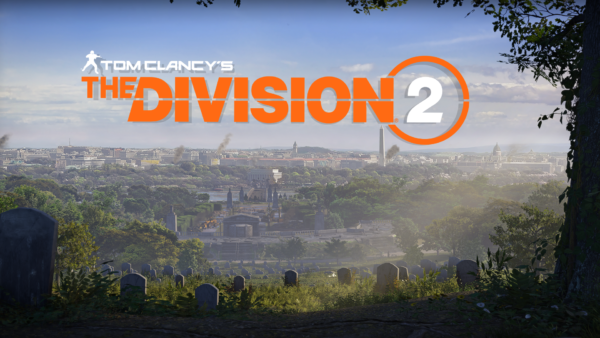
It’s been seven months since the Green Poison attack and Division agents have spread far and wide to help support the survivors in rebuilding society. You’re helping defend a civilian settlement when the SHD Network goes down, preventing you from communicating with other agents both locally and abroad. It’s right at this point that you receive a distress call from Washington DC: they’re under attack by a large force and need The Division’s help to repel it. You arrive on the scene shortly later and, after defeating the attack, learn that Washington has fallen into the control of 3 large factions. Your job, Agent, is to help the JTF retake the city, restore the SHD network and begin the process of rebuilding everything that has been lost.
The Snowdrop engine returns in The Division 2 with a minor tweaks to make the DX12 experience a lot better. There are some notable additions though like numerous different dynamic weather events (some which drastically change how missions play out) and an even more attention paid to the smallest of details in the game. The development team apparently used LIDAR and other GIS data to build out the bones of Washington DC before they turned it all post-apocalyptic. Now I’ve never been there myself but many I’ve played with have and they’ve all stated unequivocally how eerie the levels feel because of it. Right alongside this is the great foley work and sound track which is usually pushed aside as a small detail but it goes a long way with making the experience feel a lot more complete. Performance is also really good, even in the middle of heavy firefights with numerous things on fire. I had expected no less from Massive but it’s always nice not to be disappointed.
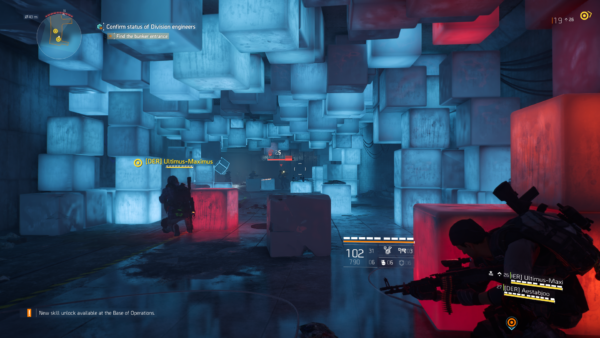
The Division 2 retains much of the original’s core game mechanics and structure with major changes to the loot system, abilities/talents and the gameplay loop. The major part of the game is still going to be centered around hiding in cover and shooting bad guys however how you progress is completely different. You’ll still find drops and chase the dragon for that perfectly rolled whatever which you need complete your build but the system has been revamped somewhat to dissuade you from doing that for days on end. The introduction of specialist classes is a nice way to make all of the builds more active than the previous class system was which often saw healers like me hiding behind cover for most of the mission. There are an overwhelming number of stats to min/max now which, depending on whether spreadsheets appeal to you or not, could be a good or a bad thing. Progression towards endgame is nice and linear, with predictable stage gates that you can work towards by simply playing the game in any way you want (or getting someone with higher gear score to feed you drops which works so well it feels like you’re cheating). I could go on describing the minutiae of the game but realistically it’s not going to make much of a difference to whether you’ll play it or not. That, my friends, is going to be wholly decided by whether or not you like the kind of loot grind that The Division 2 has on offer.
Combat is more refined and a whole lot more punishing than it was in the original game. Gone are the days when enemies would predictably spawn in front of you, take their cover positions and then take pot shots at you from there. No instead the AI now flanks, suppresses and is generally a royal pain in your ass which during the first few hours feels quite rough. Part of that is due to how I play games like this, favouring being right in the enemy’s face, which is a recipe for disaster most of the time. It got so bad that my mates eventually coined the term “Going Full Dave” when I’d inevitably end up face down in the middle of a bunch of enemies, a term I think I fully deserved. However as you gear up and understand how the AI works it becomes quite an enjoyable challenge, especially with some of the newer abilities like the mortar turret which is just a joy to use.
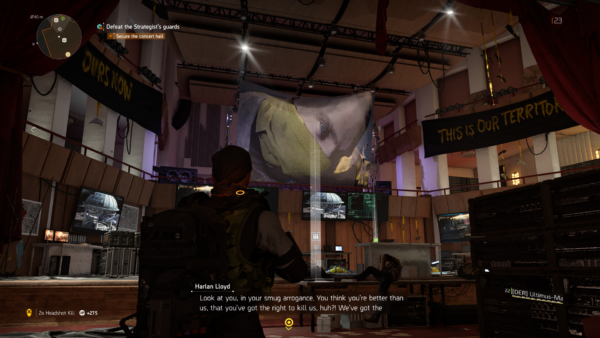
I still ended up sticking to the same weapon archetypes that I became comfortable with in the original. I mostly stuck with LMGs in the original due to their stupidly large magazines that countered the long reload times well and SMGs for their ridiculous DPS at close range. The same combo works well in The Division 2, even if I can’t get myself a 200 round LMG or a SMG that removed armour instantly. Much to my dismay shotguns are basically worthless, doing about the same amount of damage as a sniper rifle but carrying with them so much more risk that they’re just not worth using. I didn’t have much luck with sniper/marksman rifles but I’ve never really favoured them in any game I’ve played anyway (and by all accounts they are quite effective). Everyone I played with had their own set which they relied on so overall I’d have to say the weapon design is on point.
The skills are a blend of old ones that have been revamped (like the Seekers), new takes on old skills and completely new ones that shake up the game play significantly. I went back on my old faithful building initially, using the chem launcher with the heal and the hive, again with the heal, to supplement my reckless playstyle. This worked ok for the majority of the campaign however I found that I wasn’t really using the hive much and, when I did, it wasn’t particularly effective. When I chose the demolitionist specialisation though I replaced the hive with the mortar turret and, oh boy, am I glad I did. The game could have been a little clearer that it has friendly fire (just for you) as there were a couple deaths that I had no idea why they happened until I realised that I had the mortar pointing at the back of my head. Hilarious in retrospect though. Much like the weapon builds my friends and I had a diverse range of abilities selected so once again I’d say the ability design is well done, ensuring that all options are viable.
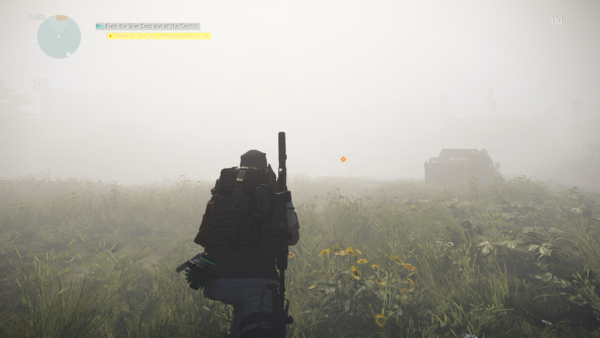
The progression through to endgame is refreshingly linear with clear activities and stage gates that you’ll need to complete in order to get through. Playing everything normally you’ll likely get to the last mission of the campaign either bang on or just before level 30. I myself had to do about an hour or so of grinding to get that last level out but you could probably skip that if you’ve been grouping for most of the game. From there you have to progress through 5 “World Tiers” which are effectively just gear score gates, forcing you to grind a bit to get enough gear up to take out a stronghold before you progress to the next one. In all honesty after doing the requisite precursor missions and a couple control points you’re likely going to be there already. Even better still if you have a friend like me who’s on WT5 and you’re on a lower tier all the gear that drops for your buddy will be at the max level for your world tier. I took one of my friends from newly minted 30 to gear score 325 in the space of 2 missions, absolutely fantastic if you’re gearing up people for end game content. I think this clear, defined progression path is what kept me coming back for so long as I always had a clear goal to work towards. Indeed it was so clear that I’ve yet to really dive into any other areas of the game except for the PVE components.
Which is why it was slightly disappointing to see that, despite basically everything in the game having a matchmaking component to it, the raid won’t. Now I’m no stranger to this challenge, I’ve made my raid career in Destiny out of grouping up with 5 other strangers on DestinyLFG.net, but I was hoping to not have to resort to that for once. It’s especially disheartening as whilst I could probably get a crew of 4 mates together to give it a crack finding another 4 is going to prove to be a royal pain in the ass. Thankfully it seems like the developers are hearing our concerns and will be bringing it in eventually although strangely cites concerns that I’d say are pretty easy to deal with. Heck DestinyLFG dealt with them years ago with a few drop down boxes. I don’t think that’s beyond Massive’s ability to deliver.
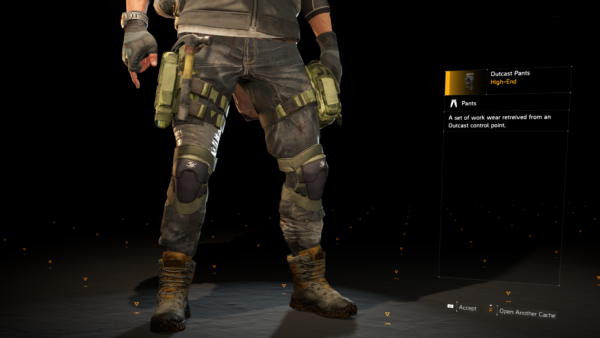
As with any of these large, open world games there’s going to be some level of jankiness that comes along with them. Typically they’re small issues, like sounds repeating themselves or models glitching out in fun and weird ways, but there’s also been some persistent crashing problems that have plagued the playerbase. I myself have only had 2 crashes in the time I’ve been playing but mates of mine had them at least once or twice a night. This does seem to have gotten better over time though so there’s hope that one day they’ll be gone for good. It does appear though that the raid isn’t immune to the plethora of small issues that dog the main game like an overly aggressive AI, sound problems and textures no loading correctly. Again I don’t believe these are beyond fixing but they are a small black mark against an otherwise stellar game.
The Division 2’s plot is fairly generic, as are pretty much all of the characters. Quick, name a main character in the game without looking them up. Pretty hard isn’t it? That’s because, as my good friend put it, Ubisoft and Massive are great at building out awesome, expansive worlds but suck hard at filling them with memorable characters. The good news is that you don’t really need to enjoy the overall plot to have fun and many of the missions stand on their own quite well without context from a larger overarching story. There’s numerous things that happen “because plot” which likely won’t get explained anytime soon but at the least they’re not so bad as to distract from the gameplay itself. I guess the biggest sin here is that the story is forgettable and, in all honesty, there’s far worse things that it could be.
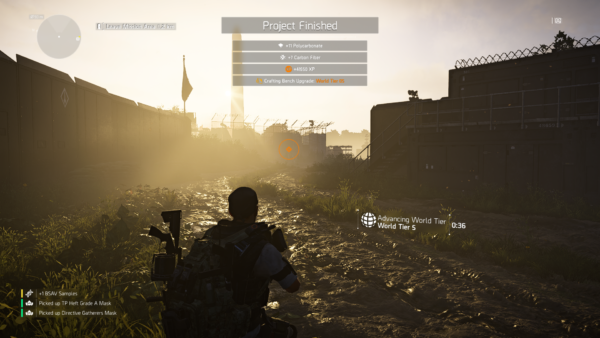
The Division 2 is, I think, the right way to do a sequel to a game. It’s got the core of what made the original great with enough new things to keep it interesting. The lessons learnt from the past aren’t forgotten and have heavily influenced the new game loops that are core to The Division 2. There’s still improvements to be made, mostly around squashing the remaining bugs/glitches and introducing matchmaking for the raid, but otherwise I think there’s no better base for this sequel to start off from. The question is where do they go from here? These initial content tranches have been great but it remains to see if the upcoming content is going to be enough to bring me back to the fold on the regular. I’m very keen to see that though as my time with The Division 2 has been well spent and I look forward to more of it in the future.
Rating: 9.25/10
The Division 2 is available on PC, PlayStation 4 and Xbox One right now for $79. Game was played on the PC with a total of 43 hours of game time and 62% of the achievements unlocked.




[…] been just under a year since I last spun up The Division 2 as whilst I thoroughly enjoyed the numerous hours I dropped into it that initial wall I hit with […]